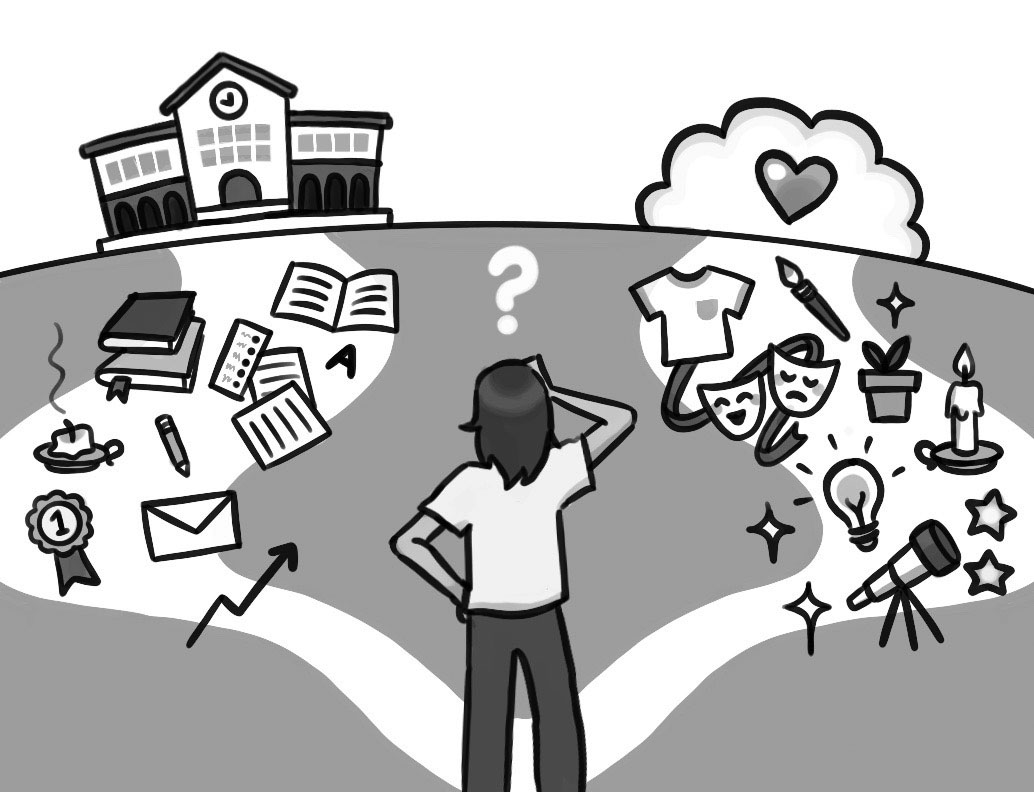Litter issue plagues campus
One table on the quad was left covered in plates, bottles, napkins and wrappers by a group of sophomores after a lunch period. The school is struggling to encourage students to throw out the trash they produce when they purchase their meals from the cafeteria.
November 19, 2021
Head of Upper School Beth Slattery encouraged students to clean up their waste on campus at the beginning of Community Flex Time on Thursday.
According to Slattery, the problem originated at the Middle School. She said the amount of excess trash prompted the administration to implement eating bans in certain areas of campus. Slattery also said the middle school cafeteria stopped offering items such as boba and ice cream, which she said seemed to be the primary sources of the trash.
Slattery said she theorizes the increased amount of trash is partially due to the implementation of the new block schedule.
“My guess is that having a common lunch [period] and common breaks means that there’s more trash all at once,” Slattery said in an interview. “In the past, there might have been trash more often but not as much at one time because not everyone was eating at the same time.”
Mac Bailey ’23 said although the problem is exacerbated by students’ workload, students have a responsibility to take care of the campus.
“It’s possible that students get too caught up in their work and, for example, simply leave a table without throwing away their trash,” Bailey said. “However, it is still important that we clean up after ourselves, as the maintenance staff already works so hard to keep our school in good shape. Even if it might be an act of forgetfulness, it’s disheartening for me to see trash around campus.”
Noah Nakayama ’23 said the increased school trash has had inadvertent consequences, such as attracting various insects.
“I feel like the more litter there is around campus, the more bees there are,” Nakayama said. “With more [bees] lingering around, it makes eating outside difficult because they seem to be attracted to chicken, which is a common choice for a lot of students. It’s really inconvenient. I’ve had to move from table to table several times, and [the problem] kind of feeds into itself because when bees land on someone’s food, they often leave it.”
Advanced Placement Environmental Science Teacher and Environmental Club Advisor Nadine Eisenkolb said litter has harmful environmental and social implications.
“I think all trash is a waste of energy and resources that should be avoided,” Eisenkolb said. “When we don’t clean up after ourselves, wildlife will suffer from ingesting the trash or getting stuck in it. [Littering] also demonstrates a disregard for the less wealthy communities in Los Angeles that live next to our trash incineration plants and landfills.”
Slattery said she is concerned about the thoughtlessness associated with littering, saying students should cooperate with one another to help resolve the issue.
“Everyone needs to learn to be responsible for their own mess,” Slattery said. “It’s disrespectful to expect others to clean up after us, but I don’t believe this is intentional on the part of most students. I think people get distracted and forget. Still, it’s important that students remind one another so we don’t put an unreasonable burden on those who take care of our campus.”































